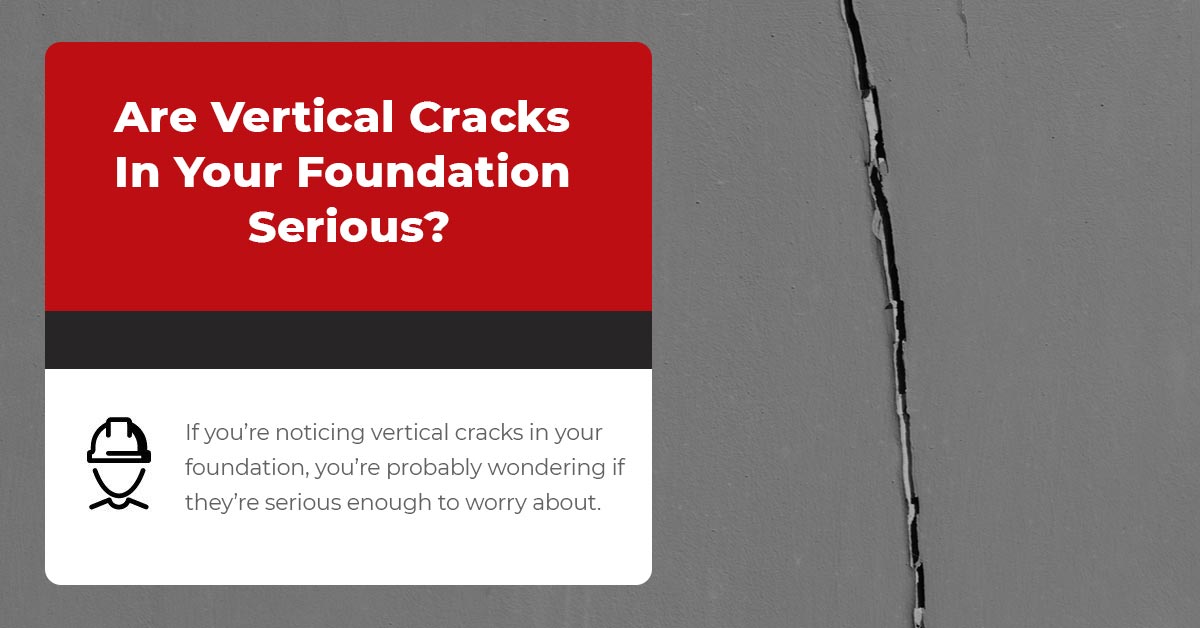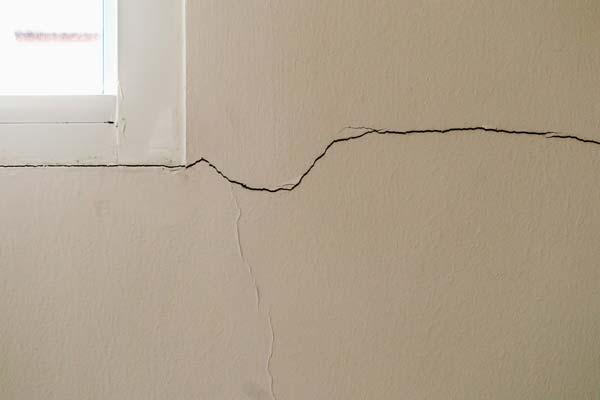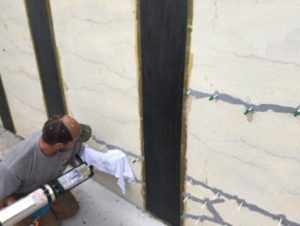If you’re noticing vertical cracks in your foundation, you’re probably wondering if they’re serious enough to worry about. That’s where this article comes in to help. You’ll learn if vertical cracks are serious, what causes them, how to repair them, and other types of cracks you might want to look out for.
Are Vertical Cracks In Your Foundation Serious?

While these cracks do not pose an immediate threat to your home’s structure, they can allow water to seep into your foundation. Built-up groundwater can find a way into your home using the smallest cracks and spaces.
If the crack grows or starts to spread in different directions, you should call a foundation repair professional as soon as possible. If the crack worsens or widens, chances are there’s a structural issue affecting your foundation, and you need stronger solutions.
Here’s how you can tell if your vertical crack is not an immediate problem.
- It’s no wider than 1/10 of an inch.
- It’s isolated.
- It does not change in size (mark the current date with a pencil near the crack with the size, checking back after a few months to see if it grew).
- It’s isolated to a single block of concrete or brick.
What Causes Vertical Cracks In Your Foundation?
Vertical cracks in foundations are usually caused by concrete shrinkage after construction and age. Shrinkage cracks form when too much water evaporates while the concrete dries. To counter this, some builders use less water when they mix concrete. But, this has its own problems, resulting in a stiffer concrete mix that is difficult to work with and allows void to form around the formwork and rebar.
How Do You Repair Vertical Cracks?
Since vertical cracks can still allow water seepage, experts can inject an epoxy that seals and waterproofs the opening. Some articles recommend using hydraulic cement, but professionals know better. Hydraulic cement will not bond properly or fill the entire crack, breaking down over time as water pushes through again. Call a professional who’s trained in foundation crack repair.
Other Types Of Cracks In Foundations
The most problematic type of foundation cracks are horizontal (also known as structural cracks). These cracks pose a threat to your foundation and home because of how compromised they leave your concrete. Horizontal cracks in the middle of your foundation walls are a common sign of bowing, meaning outside pressure is pushing your wall into your basement. These dangerous cracks are caused by,
- Differential settlement – This is when sections of your foundation settle at different rates, leading to one side of your home sinking into the soil deeper than the other sides, throwing your home off balance. This also causes sticking windows, sticking doors, and more.
- Expansive soil – Clay-rich soil can swell when it absorbs water, pushing against your foundation walls until they bow. Once the soil dries, the wall can fall back into place. This constant movement will lead to horizontal cracks.
- Hydrostatic pressure – Even if your soil isn’t expansive, if excess groundwater builds up around your foundation, it can turn your concrete walls into a floodgate, trying to keep thousands of pounds of pressure from entering your home.
- Frost heave – Two things can occur if the soil around your foundation freezes. One, the soil volume can increase and push against your foundation. Or two, the soil can lift as it freezes and falls when it thaws, placing vertical pressure along your walls.
- Outside pressure – If a heavy object is placed or parked next to your foundation walls, the pressure can push down on the soil, pushing it to its sides.
How Do You Repair Serious Cracks?
Structural or horizontal cracks require bigger solutions than simply filling in the gaps with epoxy. These cracks result from outside pressure pushing against your foundation walls or weak soil allowing your foundation to sink. Here’s how professionals fix these types of cracks.
- Wall anchors – Wall plate anchors and helical tieback anchors can secure your foundation wall to the soil behind it, preventing it from bowing inward. Wall plate anchors use an inside wall plate and an outside anchor placed in a trench 20 feet away. Helical tieback anchors use a corkscrew-like anchors drilled inside your foundation into the soil outside. Both anchor systems will pull your wall back outward, securing it in place.
- Carbon fiber straps – Carbon fiber straps are placed along the bowing or cracked wall section, anchored to the top of your joists and bottom footer. The straps are cemented into the wall using epoxy and hundreds of epoxy rivets. Carbon fiber straps don’t pull your wall back outward, but they do secure it in place, preventing further movement.
Who Do You Call?
If you live in the Southeastern United States, call Foundation Professionals Of Florida. We’re an award-winning and top-performing company based in Lake City, Florida, with over 40 years of experience. We also provide foundation waterproofing, crawl space repair, crawl space encapsulation, slab lifting, and more. Call today for your free inspection and estimate.



